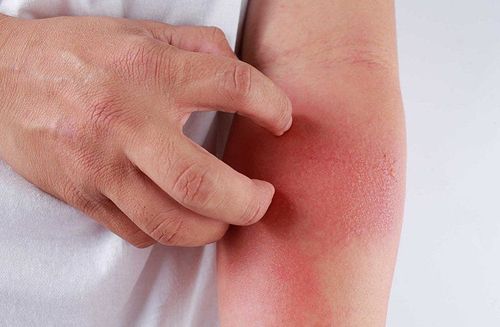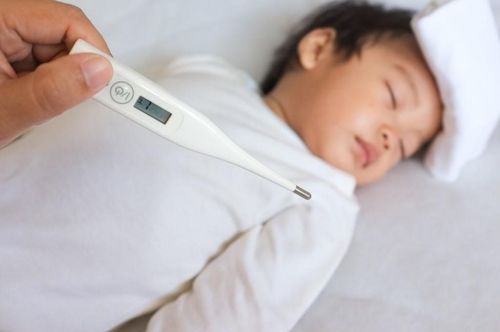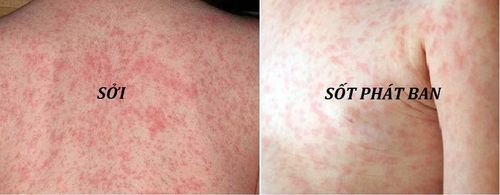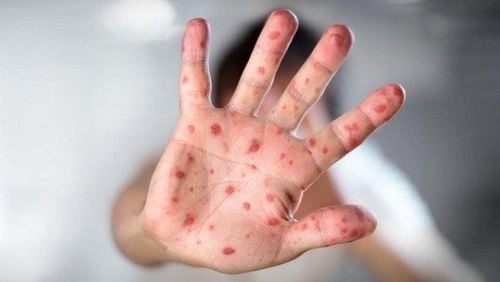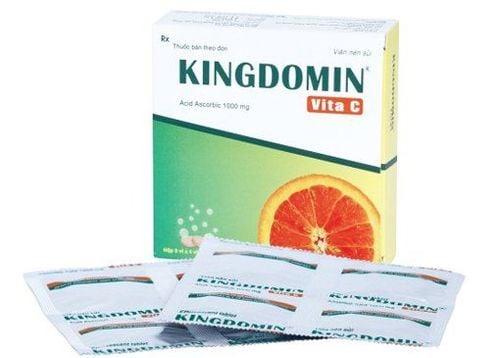This is an automatically translated article.
Viral fever, also known as viral fever, is caused by many viruses, the most common of which is a respiratory virus. With more than 200 different disease manifestations, the manifestation of viral fever and how to treat viral fever quickly is a matter of great interest to many people.
1. Overview of viral fever
Viral fever can appear at any time of the year, but increases sharply in the peak summer or rainy season. The disease is transmitted from person to person through respiratory and digestive routes, so it is easy to form epidemics. All ages are at risk, most of which are not dangerous and are self-healing. However, there are still a few cases of superinfection if not actively treating viral fever to quickly and completely recover.
After the virus enters the body and incubates for some time, the time when it reaches a high enough level is when symptoms will appear. Depending on the cause of the disease, viral fever has the following diverse manifestations:
Cough: The first, most common and long-lasting symptom; Sneezing and runny nose: It gets worse over time; Fever from 38oC - 39oC, even 40oC - 41oC: Continuous high fever episodes, only a few hours apart. In most cases, common antipyretic drugs will not work; Headache, body aches: The most obvious manifestation in adults with the disease; Crying, but awake, not excited, struggling: May appear in young children; Red throat: These are manifestations of respiratory inflammation; Digestive disorders: Patients may have abdominal pain, diarrhea, waste without blood, mucus; Eye conjunctivitis: The patient's eyes are often red and watery; Rash: When the rash appears to be a sign of an illness, the fever also gets better; Some other symptoms: Fatigue, lethargy, vomiting, itching and purulent ear discharge,... During and after fever, the patient's body will be sore and tired to varying degrees, accompanied by: swollen lymph glands. After a short time, the fever will subside and the illness usually goes away on its own, but fatigue and cough can persist for several weeks.

Quấy khóc có thể là dấu hiệu sốt virus ở trẻ nhỏ
2. Some notes about viral fever and treatment
2.1. What medicine should be used for viral fever?
Answering the question "What medicine should I take for viral fever?", doctors said that oresol is a commonly used type with the following details:
Ingredients: 20g anhydrous glucose; 3.5g sodium chloride; 2.9g sodium citrate and 1.5g potassium chloride; Usage: Mix 1 sachet in 1 liter of boiled water to cool; Dosage: Drink continuously as during the day, depending on the degree of dehydration can use 2-3 packs a day. Alternatively, oresol can be replaced with hydrite tablets, drop 1 tablet in 200ml of water each time to replenish electrolytes.
Should use antipyretic with acetaminophen component when fever > 38.5 degrees C. In this case, paracetamol is the popular choice:
Content: 10 - 20 mg/kg body weight; Dosage: Each time taken 4-6 hours apart; Effect: Prevents hyperthermia. In order to cure viral fever so that it can be cured quickly, it is necessary to pay attention to mixing and taking medicine at the right rate. When the concentration is too dilute, electrolytes will not be provided in the required amount; Conversely, if it is too dense, it will cause an overload of electrolytes.
2.2. Support to reduce fever without drugs
Although viral fever can go away on its own after 1-2 weeks, it is important to treat aggressive symptoms of fever, especially in young children. Specifically:
Drink lots of water, eat salted porridge or drink enough for infants; Should stay in a warm room, avoid drafts and do not let the room temperature be too lower than body temperature; Wear clothes that are cool enough; Regularly wipe the body, dry sweat with warm water, the temperature of the water is about 3-4 degrees Celsius lower than body temperature; Do not arbitrarily use ice to apply at home; Can be combined with antipyretic patches.
2.3. Some other notes

Cần đưa bệnh nhân đến các cơ sở y tế gần nhất khi có dấu hiệu sốt cao và co giật
Viral fever and its treatment are not too complicated, but be careful and keep a few notes in mind to avoid making the disease worse. For example:
Maintain personal hygiene During viral fever, the patient's resistance is very low, the body is tired, making it easy to get other diseases. Therefore, keeping personal hygiene clean plays a very important role, helping patients prevent superinfection from other viruses. The patient can take a bath with warm water, then dry thoroughly afterwards and change into new clean and cool clothes.
Do not abuse fever-reducing measures. Measures to reduce fever at home patients should absolutely not abuse include: Taking antibiotics, taking fever-reducing drugs continuously, going on intravenous fluids, using ice or water too much. cold, too hot to wipe people. In addition, using too much nebulizer should also be avoided because it can cause damage to the nasopharyngeal mucosa.
Visit a medical facility If the fever persists for 5 days or more, or the fever is higher than 39 degrees Celsius but fever-reducing medicine does not work, or even convulsions, continuous headaches , nausea, ... the family members need to quickly bring the patient to see a doctor. In order to cure viral fever quickly and safely, it is necessary to apply the right treatment measures as prescribed by the hospital, which also limits the risk of unwanted complications.
Please dial HOTLINE for more information or register for an appointment HERE. Download MyVinmec app to make appointments faster and to manage your bookings easily.





